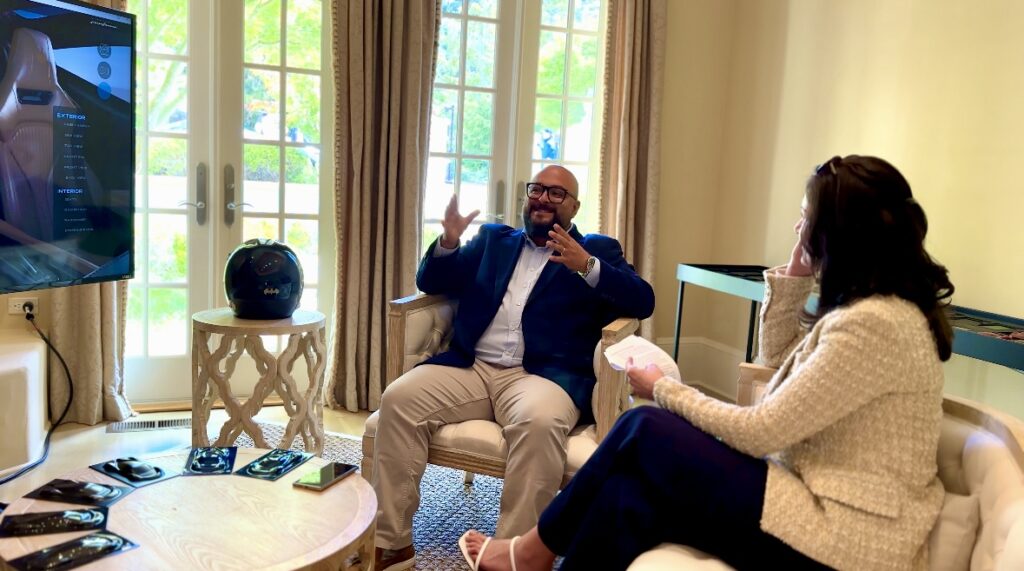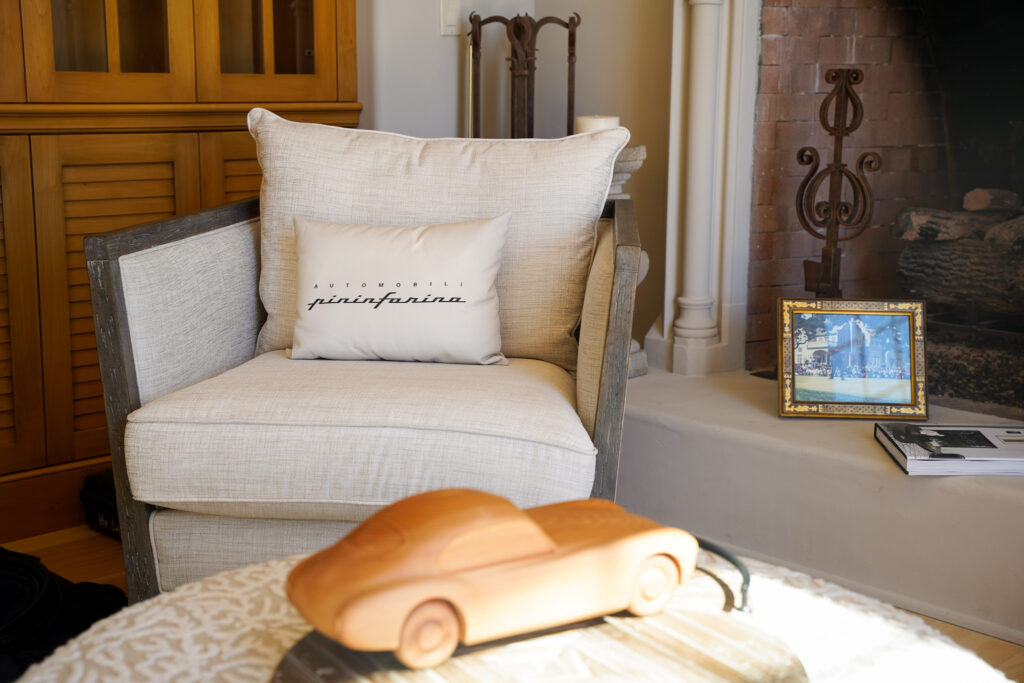The Pebble Beach Concours d’Elegance has long been the epicenter of automotive artistry, where history and innovation share the same stage. This year, amid the rare classics and celebrated designs, Pininfarina marked its 95th anniversary with a dual celebration: unveiling the Battista Novantacinque, a one-of-one hypercar tribute by Automobili Pininfarina, and awarding the newly created Pininfarina Trophy, honoring a vehicle that best represents nearly a century of design excellence.
For Pininfarina S.p.A., the historic Italian coachbuilder behind countless Ferrari, Alfa Romeo, and Maserati icons, this milestone was a chance to reaffirm its enduring philosophy: a tradition of innovation. For Automobili Pininfarina, the all-electric hypercar manufacturer launched in 2018, it was an opportunity to show how that legacy is being carried into a bold, electrified future, while turning customers’ dreams into reality.
This wasn’t my first time covering Automobili Pininfarina. Last year at Monterey Car Week, I interviewed CEO Paolo Dellachà and Chief Design Officer Dave Amantea about their Wayne Enterprises Capsule Collection in partnership with Warner Bros. Discovery.
That project drew direct inspiration from Batman, with Automobili Pininfarina envisioning Bruce Wayne himself as their archetypal client. In fact, they told me that the design team had pinned photos of Christian Bale’s Wayne from The Dark Knight on their mood boards years before the collaboration serendipitously manifested.
Talk about crafting their own destiny! They literally turned a fantasy into a masterful reality.
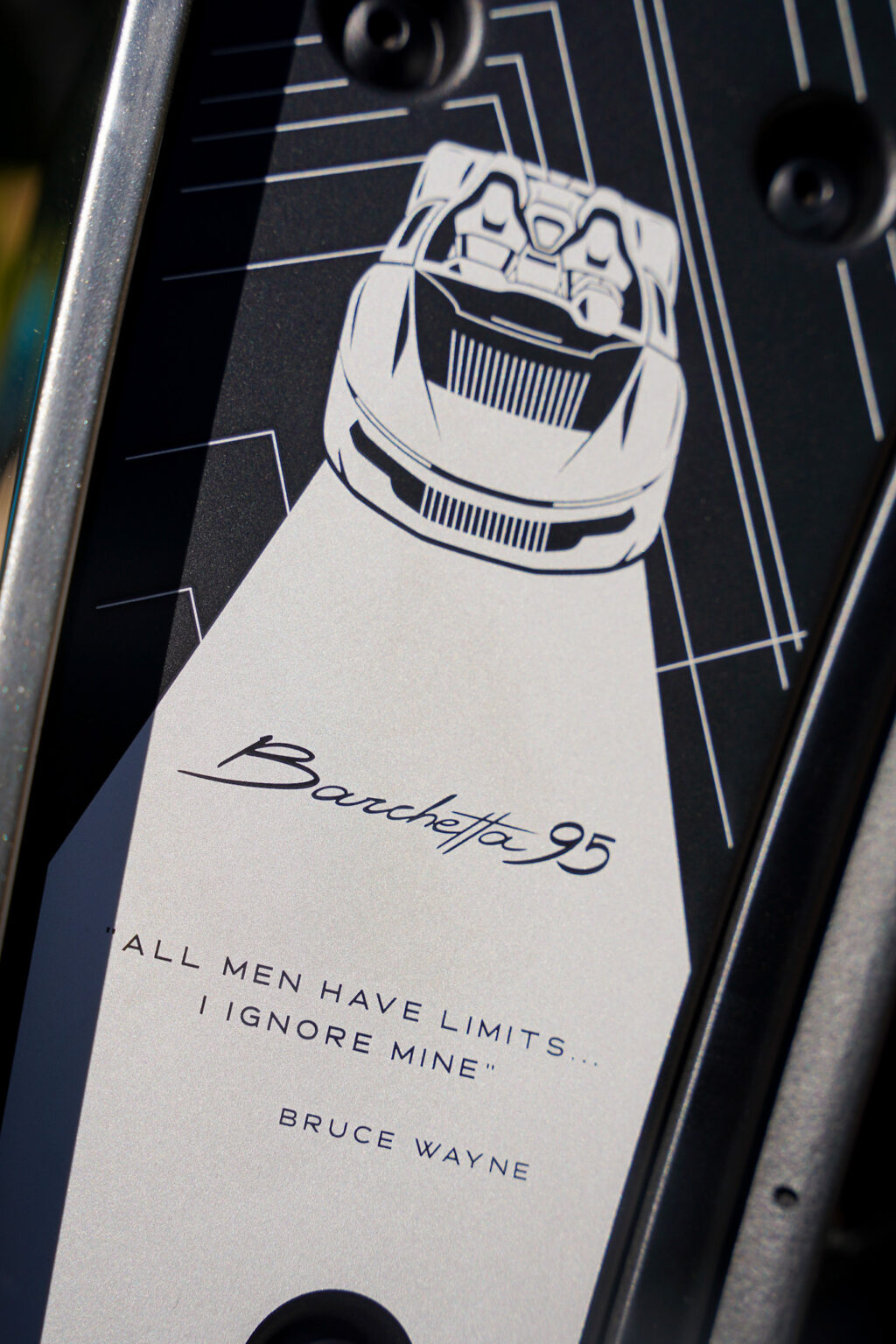
As my first introduction to the brand, that collection (and the inspiring story behind it) taught me that Automobili Pininfarina designs not just cars, but alter egos; creating machines that allow their owners to step into the role of a superhero. In addition to this, Pininfarina S.p.A. has played an integral role in many of the world’s most iconic supercars to grace the planet. Quite the accomplishment, to put it simply.
This year, the narrative evolved. At Pebble Beach, the companies celebrated not a fictional vigilante, but rather, real legends of design. The Battista Novantacinque (produced by Automobili Pininfarina) honors 95 years of Pininfarina heritage, while looking forward to the next century of artistry, sustainability, and electrified performance.
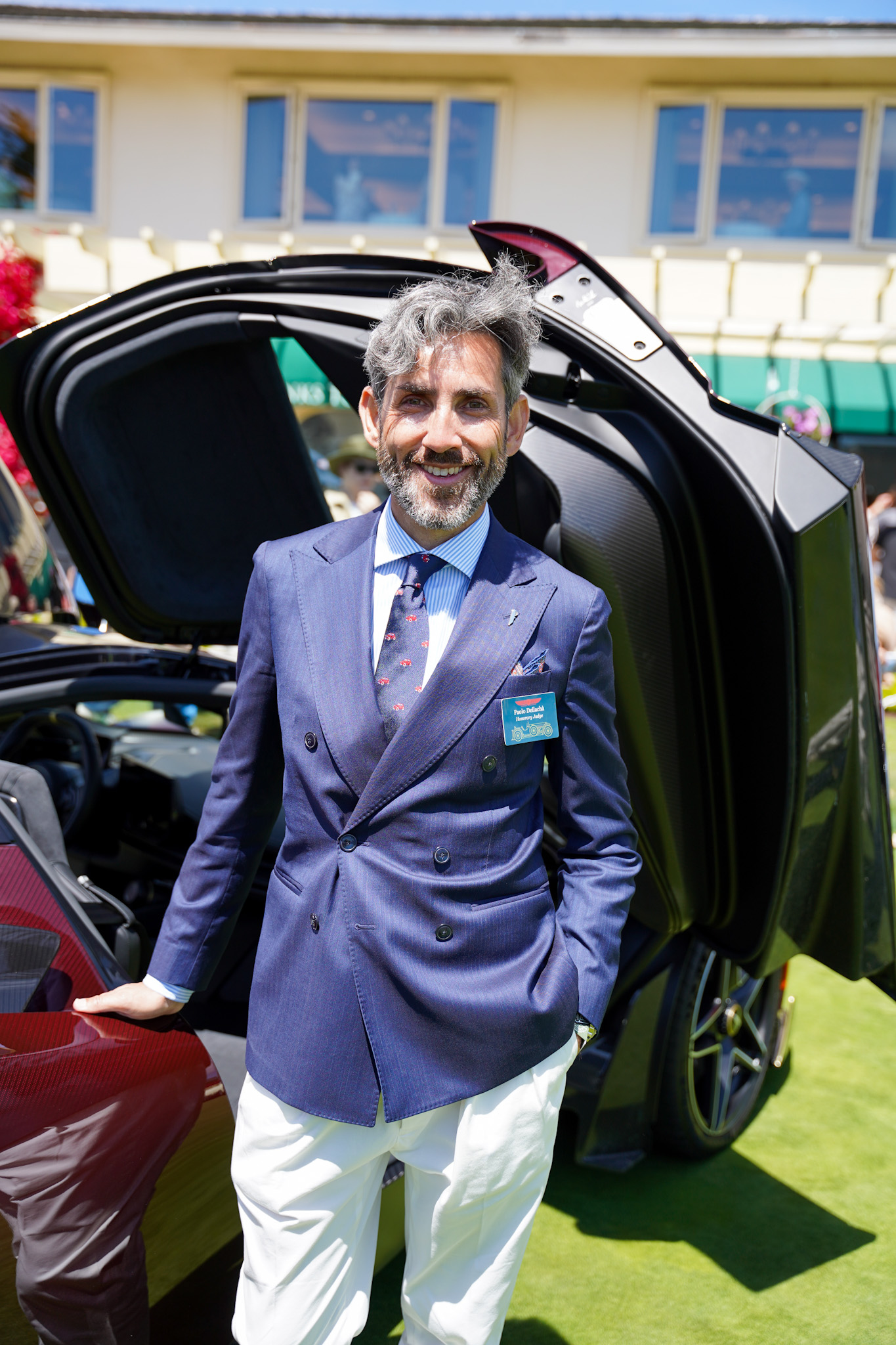
Interview with Paolo Dellachà, CEO, Automobili Pininfarina
Christina-Lauren Pollack: The launch of the Battista Novantacinque is a symbolic moment for the brand. What message are you hoping to send with this bespoke edition, and what does it represent to you personally?
Paolo Dellachà:
“The Battista Novantacinque is more than a car; it’s a statement of intent. With this final edition, we are celebrating 95 years of legendary heritage while signaling the bold future we are shaping with Italian mastery. It conveys to our clients, and to the world, that Automobili Pininfarina is committed to honouring timeless Italian artistry while leading the evolution of luxury mobility.
For me, it’s deeply personal. I grew up admiring Pininfarina as the benchmark of elegance and innovation. To now oversee a product that connects this iconic past with a thrilling future is both a privilege and a responsibility.”
CLP: You’ve led Automobili Pininfarina through a defining period of global recognition. How has your leadership evolved as the brand gains momentum, and what strategic shifts are you prioritizing as you look to the next five years?
PD:
“It started with a long preparation phase, actually, since 2018 when we took the challenge of realising the dream of Battisita: the first car entirely designed, engineered and handmade, bearing the Pininfarina brand. We put together an incredibly talented and international team. The result is what is visible today: the most powerful road-legal hypercar ever delivered in 2022, and delighted owners enjoying it on their preferred routes and tracks.
In the early days, my role was to build belief in our vision, our team, and our clients. Today, it’s about empowerment: creating a culture where creativity and technical excellence thrive together.
Looking forward, our priorities are clear: push the boundaries of personalisation, craft experiences that feel like family, and expand our portfolio in a way that remains true to our values: sophisticated elegance and pure granturismo essence.”
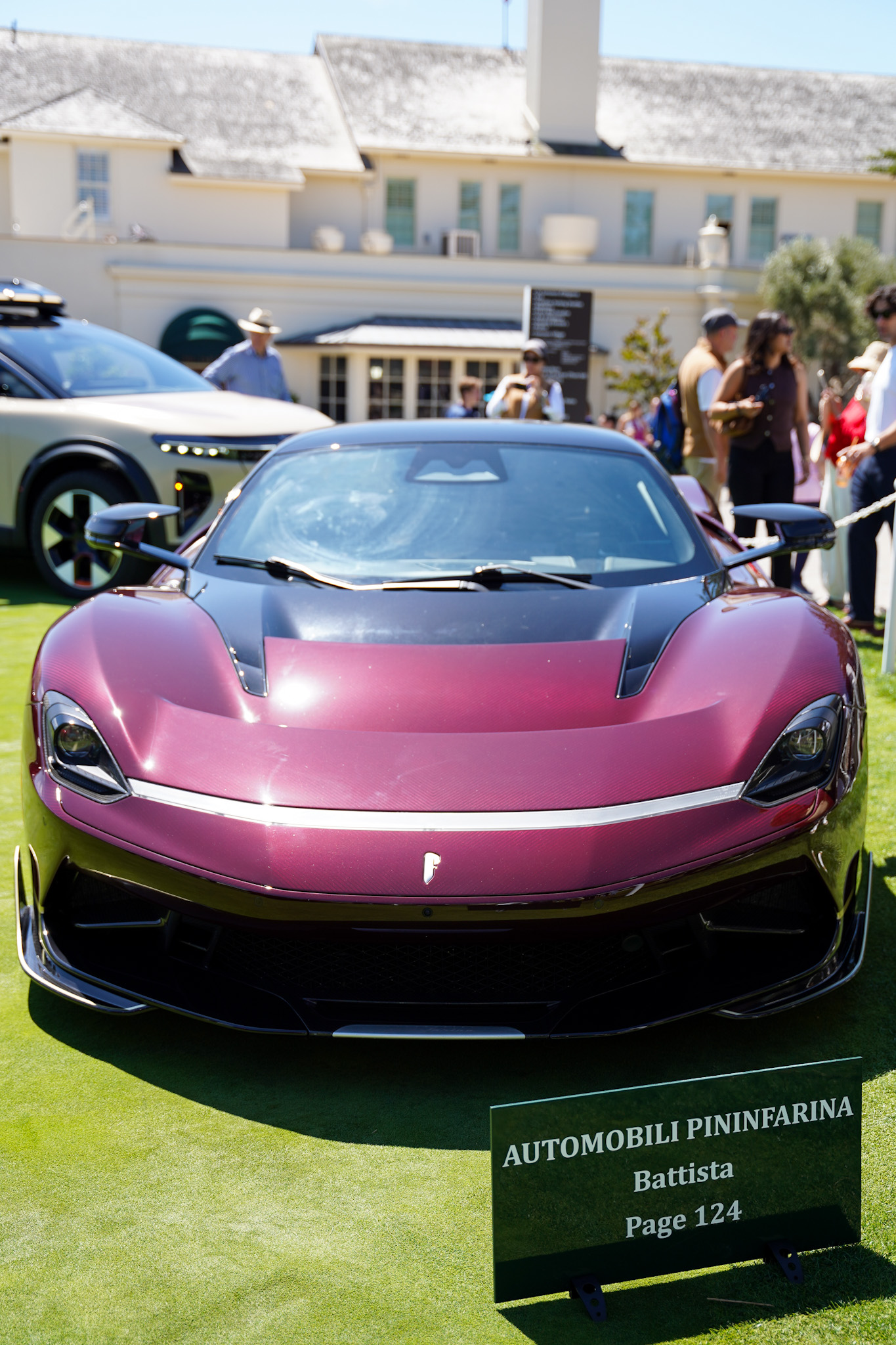
CLP: The hypercar landscape is rapidly changing. What do you believe sets Automobili Pininfarina apart not just in design and performance, but in experience and soul?
PD:
“What sets us apart is that we are not simply building hypercars; we are delivering world-class experiences, creating a community, and crafting legacies. The Battista, and every project that follows, is conceived with the idea of balancing breathtaking performance with emotional resonance. That’s why we invite our clients to go on our journey with us to bespoke and craft their dream car.
The soul of Automobili Pininfarina lies in the blending of tradition and innovation. Few companies can claim the lineage we have, yet even fewer dare to reinterpret it for a new era. That is our difference—cars that are not just fast and beautiful, but meaningful.”
CLP: What does it mean to you to carry the Pininfarina name into this next era of electric performance and personalized luxury?
PD:
“Carrying the Pininfarina name is both an honour and a responsibility. This name has defined elegance in automotive design for nearly a century, and now we are entrusted with writing its next chapter.
For me personally, it is about respect and ambition. Respect for the generations who shaped this extraordinary heritage, and ambition to ensure that future generations view Automobili Pininfarina with the same admiration. By combining pioneering technology with bespoke luxury, we are delivering experiences that emotionally resonate with our clients. This is not just our mission—it is our legacy in motion.”
Interview with Dave Amantea, Chief Design Officer, Automobili Pininfarina
Christina-Lauren Pollack: This year, you were named an Automotive News Europe Design Rising Star. Congratulations! How has your design philosophy evolved over the years, and what personal ethos drives your creative direction today?
Dave Amantea:
“Being named an Automotive News Europe Rising Star was a proud moment—especially receiving the award in my hometown, Torino, at the MAUTO, a museum close to my heart, in front of one of my mentors, Giorgetto Giugiaro, and a design icon like Peter Schreyer. Now we are ready to shape the future we just started, and many interesting things are coming.”
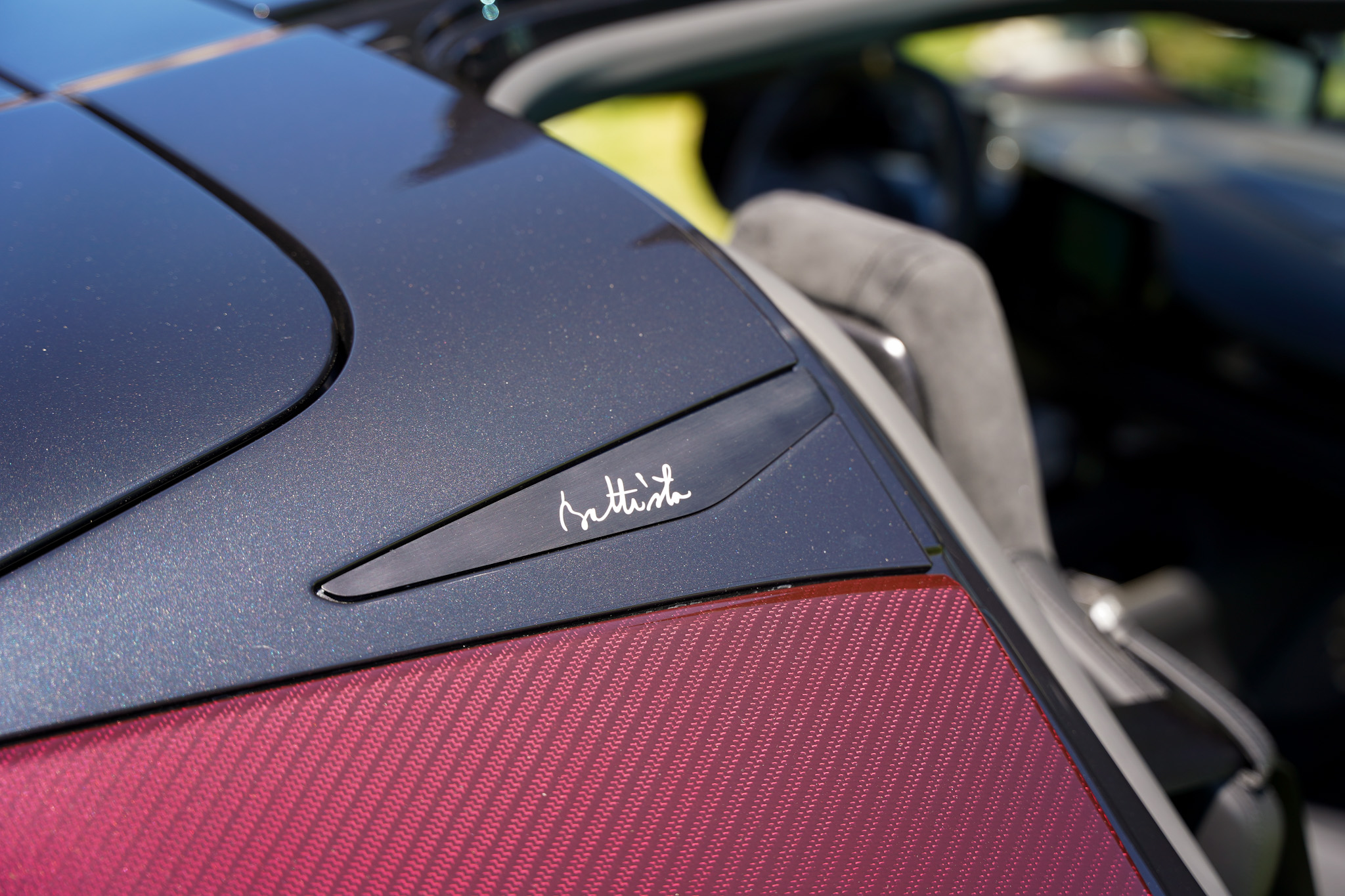
CLP: The Battista B95 receiving the iF Design Award was a proud moment. You described it as a representation of your ‘Pura Philosophy’. Can you share how that philosophy manifests across your work, from concept to execution?
DA:
“For over seven years at Automobili Pininfarina, I’ve helped shape the PURA design philosophy: a design vision rooted in passion, evolving into a culture that guides our team and inspires the company. It’s more than aesthetics; it’s a mindset. I have dedicated most of my energy to this since day one, and I am very proud of it. I still remember the very first presentation on October 10th, 2018, in Milan, to Anand Mahindra in person. At that time, it was just a PowerPoint full of dreams. The PURA design philosophy is one of my greatest achievements.
From then, we crafted Battista, the very first car to have the Pininfarina badge on the bonnet. She is our bridge from the past to the present. The initial mission was to create an EV that can be beautiful and resonate emotionally. Paolo Pininfarina asked us to be fearless innovators as per tradition, so we created PURA Vision, our gateway to the future and a true representation of our vision of future luxury. PURA Vision was already displayed secretly in 2019, with the public debut being in 2023. Then, the B95, the world’s first electric hyper Barchetta, was the embodiment of our latest evolution of our philosophy, which lives on through every creation. At Pebble Beach 2024, we signalled the next chapter with bespoke one-offs like Battista Targamerica.
Designing for this brand is a unique joy. I’m driven by obsession, curiosity, and the belief that the best project is always the next. And none of it happens alone; I have an amazing team. Great design demands synergy with engineering, but most importantly, great alignment between CDO and CEO. I am starving to learn more and trying to do better and better.”
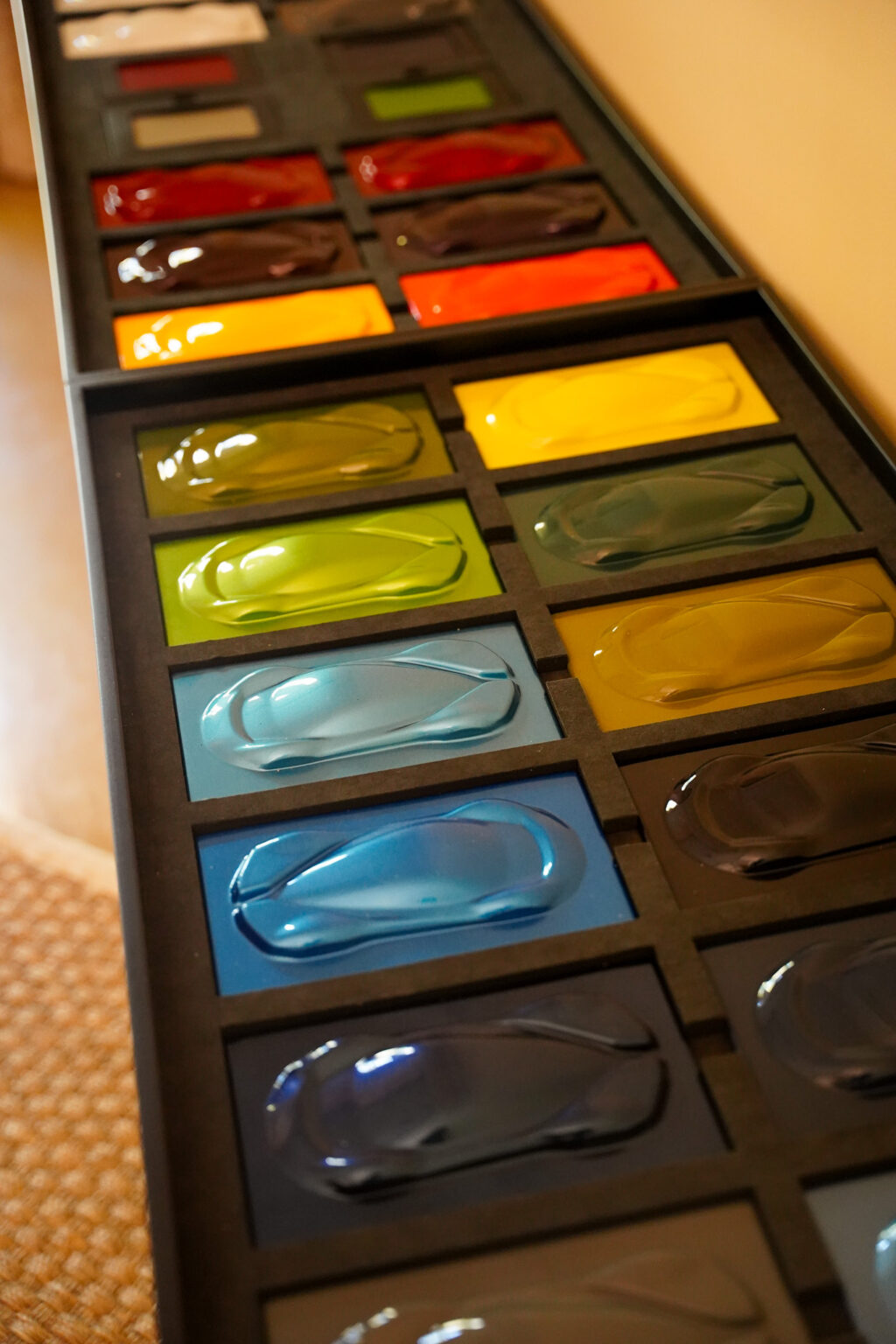
CLP: Pininfarina’s 95th anniversary blends historic reverence with future-forward design. How do you personally approach the balance between timeless aesthetics and innovative thinking?
DA:
“I like to prepare the creative team by immersing them in a scenario. I draw inspiration from the Hollywood method that actors use to get into character. The core part of the process involves creating tools that help align the team with my main drives and vision. After a few weeks of mental warm-up, I begin to consolidate everything into PowerPoints or videos that enhance the perception of the overall meaning of the presentation, bringing out the key concepts. Then, my strategic team of directors helps me to consolidate and elevate the vision to the right level of detail.
At this stage, I enjoy simplifying the message—it’s a fundamental part of the process because I need to be able to communicate with many people, even those who aren’t designers, and convey the vision with very little. If I can’t do that in a simple and concise way, it means the vision isn’t ready or not good enough, so more refinement is needed.
To achieve this, I often use analogies. For example, I compared the Automobili Pininfarina team to chefs preparing a meal in line. This is one of the central themes of Italian culture: food and the sacred conviviality of sharing a meal. The secret of Italian cuisine lies in simplifying recipes, sourcing the best raw ingredients, and then elevating the flavor with just a few elements—making a simple tomato pasta unforgettable.
My belief is that true Italian design revolves around one strong concept: the beauty of imperfections. To make the design feel more human, more lovable, and filled with emotions. Perfection risks being tasteless or not timeless — and maybe we can agree that whether you like it or not, perfection is definitely not 100% Italian.
This simplicity and minimalism require attention to detail, self-criticism, sacrifice, and a lot of hard work. When the team is in sync, the design process becomes incredibly powerful, and both the project and the vision grow together.
The concept was to represent a retro-futuristic luxury with a simple, minimal touch—but with a bold, decisive, and distinctly Italian character. Using clean forms enriched with precious details, all harmonised by a luxury CMF with an elegant and sporty Italian taste. We called this in our vision document irreverent luxury.”
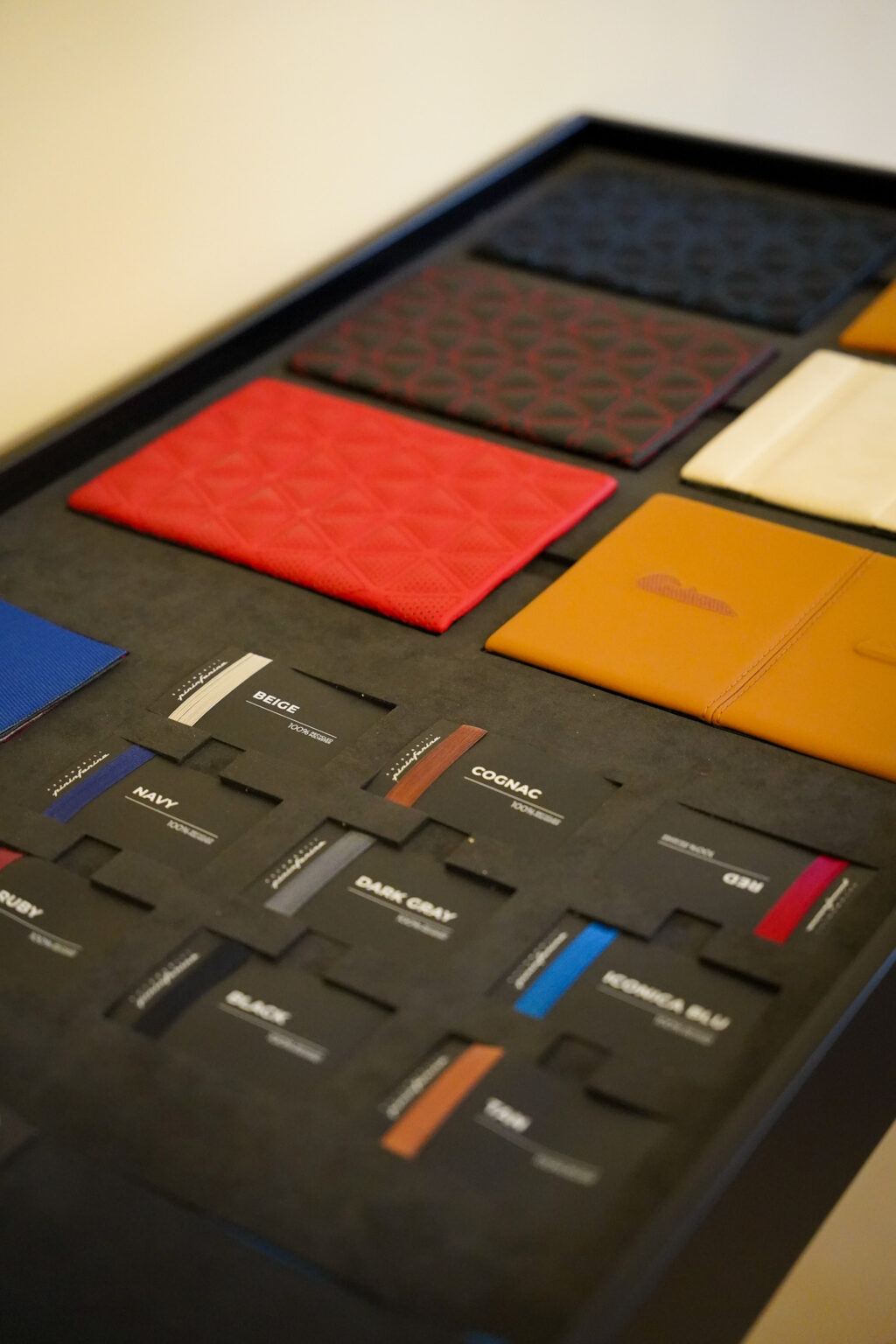
CLP: When you’re designing a new vehicle, what emotions or experiences are you ultimately trying to evoke for the driver, and how does that influence every detail, from the silhouette to the stitching?
DA:
“I love Pininfarina, and I feel proud and honoured to be part of this brand’s history as a protagonist. As a designer, working for the most iconic design signature in the world is one of the greatest things that could have happened to me. It’s a huge responsibility and comes with a lot of pressure.
I live each day intensely, driven by passion and love for my work and for this brand. As someone from Turin, I want Pininfarina to experience a new golden era. To achieve that, it takes hard work, an incredible team, and the refusal to settle for ‘good enough.’ Success is built through countless attempts—there’s no magic wand, and yes, a bit of luck helps too.
I’m obsessed with my work, which is why I don’t mind thinking about design 24/7. I enjoy learning every aspect of the automotive business and constantly improving because creating a car is a complex process that requires the joint effort of many professionals. There’s a lot of room to increase efficiency, and that means understanding other departments better and improving communication.
Design begins long before the pencil touches the paper. That’s where the role of the CDO operates—from shaping the business case to analysing the BOM and beyond, together with C-suite colleagues from the beginning. A designer can anticipate the outcome of an initiative even before taking risks and spending money by interpreting numerical assumptions laid out in an Excel sheet. To do that, one must grasp the complexities of the business—from finance to logistics to politics.
I love learning, and I’m learning every day. That’s why I try to set the design direction even before sketching begins—so we can get closer to the overall target, not just the stylistic on,e but I must accomplish the desire of my CEO and company target. This also helps the process flow better and, when possible, achieve numerical efficiency.
All this, especially in Italy, is a process that presents drama, many discussions, and tons of work, but at the end, if the customer smiles, we know that we did a good job and we can try to do better.”
Interview with Silvio Angori, Vice Chairman & CEO, Pininfarina S.p.A.
Christina-Lauren Pollack: As Pininfarina celebrates its 95th anniversary, what values or philosophies from the brand’s earliest days do you believe still define its work today?
Silvio Angori:
“From our founding in 1930, Pininfarina has been guided by three enduring values: elegance, purity, and innovation. These principles have shaped not only our most celebrated automotive designs but also our work across architecture, industrial design, and mobility.
Over 95 years, the tools, technologies, and even the definition of mobility have changed dramatically, yet our philosophy remains constant: design is at its best when it combines timeless beauty with forward-looking functionality. This legacy of blending artistry with engineering excellence continues to define everything we create today, from high-performance electric hypercars to urban mobility concepts.”
CLP: This year, you’re personally presenting the Pininfarina Trophy at Pebble Beach Concours d’Elegance. What qualities do you feel make a car truly worthy of this honor, and how does the trophy itself embody the brand’s legacy?
SA:
“The Pininfarina Trophy is reserved for a vehicle that does more than just turn heads — it must embody a harmony of form and function, showcase innovative engineering, and reflect the artistry that transforms a car into a cultural icon.
The winner should capture the same spirit that has animated Pininfarina’s designs for nearly a century: proportion, purity of line, and a sense of motion even at rest.
The trophy itself, both designed and handcrafted by Pininfarina, is a tangible representation of our design language — combining clean, sculptural forms with meticulous craftsmanship. It serves not just as an award, but as an object that reflects our brand’s enduring commitment to beauty, innovation, and artisanal excellence.”
CLP: Pininfarina has long stood at the intersection of form and function. How do you see the role of a coachbuilder evolving in today’s era of electric and autonomous vehicles?
SA:
“The role of the coachbuilder is undergoing a renaissance. In the age of electric and autonomous vehicles, platforms are becoming more flexible, freeing design from many constraints of the internal combustion era. This opens unprecedented opportunities for personalization, aerodynamic innovation, and interior experiences that place equal emphasis on comfort, sustainability, and digital integration.
A coachbuilder like Pininfarina is uniquely positioned to craft vehicles that are not only technically advanced but also deeply human-centered, ensuring that even in a highly automated future, the emotional connection between person and vehicle remains as strong as ever.”
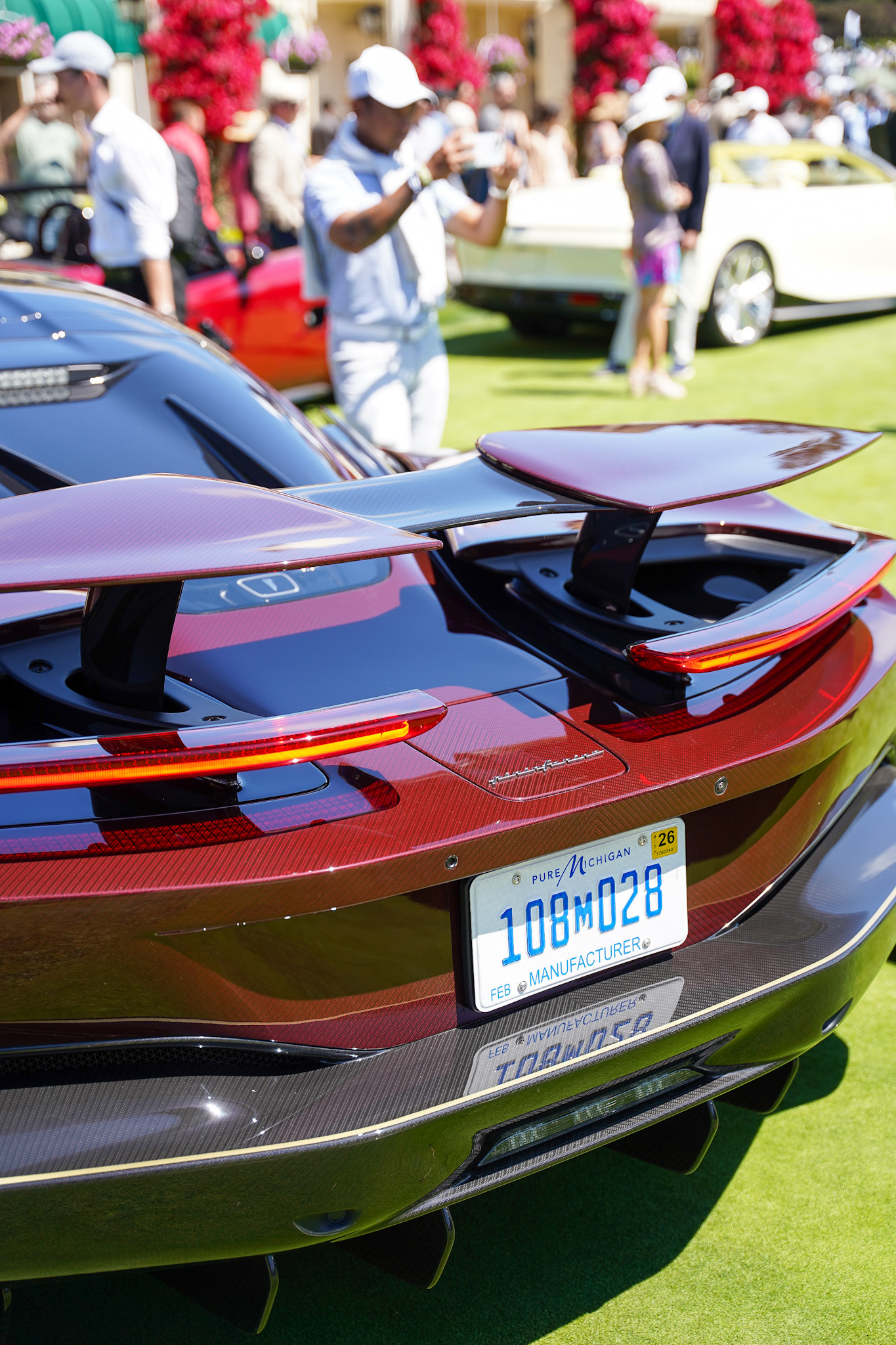
CLP: What excites you most about the future of Pininfarina’s design innovation over the next decade, particularly as it relates to sustainability and craftsmanship?
SA:
“The opportunity to merge cutting-edge sustainability with the timeless traditions of craftsmanship. At Pininfarina, we see sustainability not as a constraint but as a catalyst for innovation — driving the exploration of new materials, advanced manufacturing techniques, and design solutions that reduce environmental impact without compromising beauty.
Over the next decade, we will continue to push the boundaries of how form, function, and responsibility intersect, delivering creations that honor our heritage while shaping a more sustainable and inspiring future for mobility and design.”
Experiencing the beautiful Battista Novantacinque at Pebble Beach was more than witnessing the reveal of a hypercar; it was experiencing the convergence of heritage and future. For Automobili Pininfarina, the car represents bold innovation. For Pininfarina S.p.A., it’s a special tribute to 95 years of artistry.
Last year, the brand drew inspiration from Gotham’s fictional superhero. This year at Monterey Car Week, it honored real legends of design. Both narratives carry the same truth: Pininfarina doesn’t just design exceptional cars, it makes dreams come true.
As Silvio Angori put it:
“Our heritage gives us roots, but it is our vision that carries us forward. That is what makes Pininfarina timeless.”
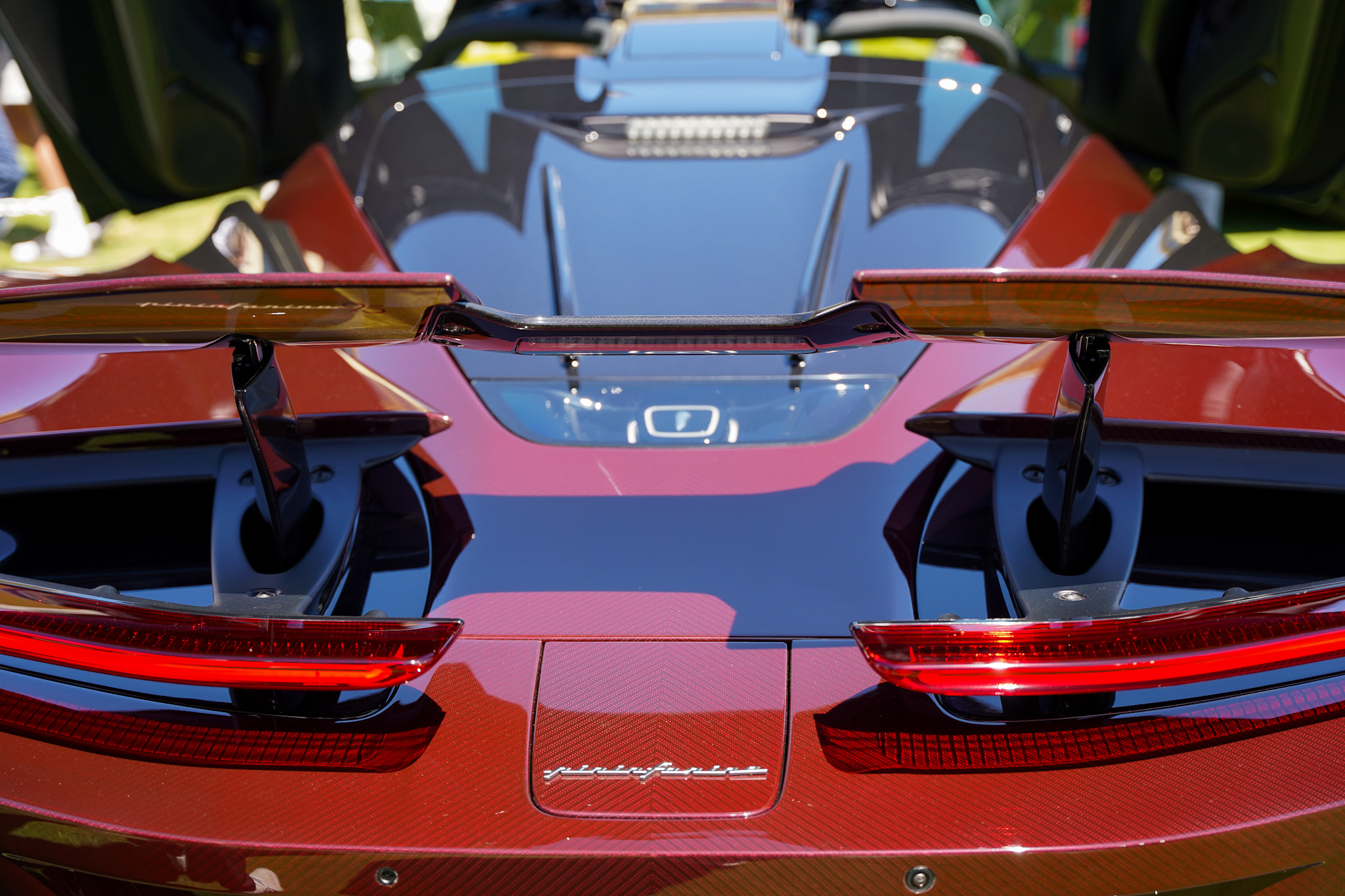
The post Designing Legends: Automobili Pininfarina’s Battista Novantacinque Celebrates 95 Years of Italian Mastery appeared first on Inspirations and Celebrations.
inspirationsandcelebrations.net (Article Sourced Website)
#Designing #Legends #Automobili #Pininfarinas #Battista #Novantacinque #Celebrates #Years #Italian #Mastery

